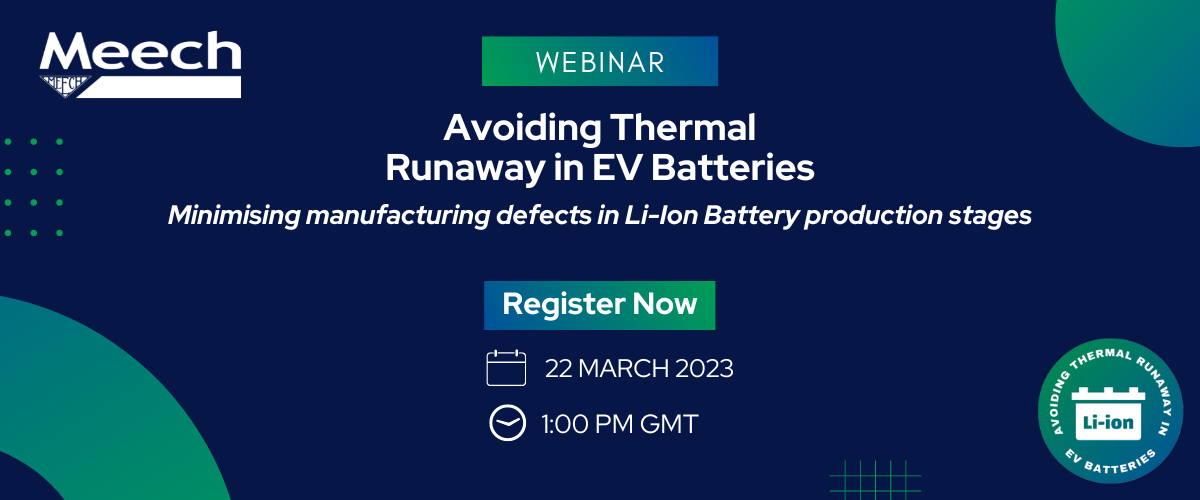Webinar – Avoiding Thermal Runaway in EV Batteries
Save the date: Learn more about thermal runaway and the effects of contamination in the battery manufacturing process
Electrification is happening fast and on a global scale – EVs, scooters, domestic appliances, domestic energy storage, green energy storage banks, to name a few.
To accommodate this need for electrification, new battery technology is being developed quickly, which has both positive and negative effects on the industry. There is now, more than ever, a need for lower cost manufacturing, smaller factory environmental footprints and higher energy density storage.
On the other side of the coin there is no universal “standard”, and all technologies are under individual NDAs making any collaboration increasingly difficult. If a Lithium Ion Battery suffers an electrical short – the short can very quickly accelerate leading to ‘thermal runaway’, meaning the battery can no longer be controlled and can become a major fire and safety hazard.
Professor Christensen, Professor of Pure and Applied Electrochemistry will share his experiences and research on just how significant a thermal runaway event can be and show some dramatic footage of real life events. Other than battery damage due to e.g. a vehicle collision, another significant potential cause is the presence of contamination deep within the battery cells.
Without warning, this contamination can lead to an unexpected shortage and also trigger a thermal runaway event. This may occur years after its manufacture. We will also highlight the importance of rigorous quality control within the different battery manufacturing stages and how this must be an underlying focus within each design stage moving forwards.
If you would like to know more about thermal runaway and the effect of contamination in the battery manufacturing process, sign up to attend our free webinar on 22nd of March by clicking the ‘Register’ button.


Pr. Paul Christensen
Professor Paul Christensen is a professor at Newcastle University in Pure and Applied Electrochemicals. He is also the founding Director of Lithiumionsafety Ltd Consultancy. As a senior advisor of the National Fire Chiefs Council, he also fronts many presentations to fire brigades across the UK and has also toured Australia, Tasmania and New Zealand to present lectures to first responders by the Australasian Fire and Emergency Service Authorities Council and Motorola.

Ian Atkinson
Ian Atkinson works at Meech International and is a manufacturing technology and support systems specialist focussing on new markets and product innovations. With a long career based on optimising material flows in manufacturing, Ian is passionate in exploring different technologies and how they can be enhanced.


